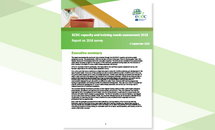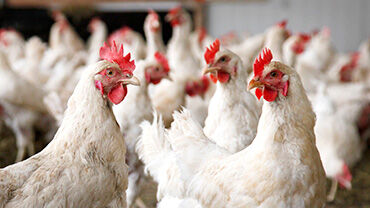Targeted surveillance to identify human infections with avian influenza virus during the influenza season 2023/24, EU/EEA
This document describes a risk-based targeted approach to identifying possible avian influenza virus infections through established routine respiratory virus surveillance systems during the winter season 2023/24. It complements the guidance on testing and detection of zoonotic influenza virus infections in humans in the EU/EEA, and occupational safety and health measures for those exposed at work.
Executive Summary
Following the autumn bird migration, avian influenza virus outbreaks are expected to occur and spread geographically across the EU/EEA. The transmission of avian influenza viruses to wild, domesticated and farmed mammals will be likely to continue. Whenever avian influenza viruses are present in wild birds and mammals, the possibility of transmission to humans cannot be excluded, particularly for those who are directly exposed while not wearing protective equipment.
During the winter months when seasonal influenza viruses are circulating in the population, testing and sub-typing approaches for avian influenza virus need to be proportionate to the epidemiological situation and the capacities of reference laboratories. Therefore, a risk-based targeted approach is proposed in areas with ongoing avian influenza outbreaks in poultry and detections in wild birds and other animals, focussing on outbreaks and severe respiratory or unexplained neurological disease.
To identify human infections with avian influenza virus, the following approach is proposed:
- People admitted to hospitals with respiratory symptoms should be asked about exposure to sick or dead birds, wild or other animals in the two weeks prior to symptom onset or before admission (if symptom onset date cannot be defined). They should be tested based on an exposure risk assessment by the clinician. Specimens from hospitalised patients with very severe influenza virus infections could be considered for sub-typing, particularly if they are believed to be part of a nosocomial outbreak.
- Consideration should be given to testing hospitalised patients with unexplained viral encephalitis/meningoencephalitis for seasonal influenza virus. Specimens positive for type A virus should be further sub-typed for seasonal influenza viruses to rule out avian influenza virus.
- Clusters of severe respiratory infections requiring hospitalisation should be investigated and tested for avian and other influenza viruses if routine testing for respiratory pathogens is inconclusive.
- Wastewater surveillance could be considered as an additional monitoring system locally in affected areas, however, so far there is very limited experience and evidence of wastewater surveillance being used to identify low-level circulation of zoonotic influenza virus infections in the population.
In general, any influenza A-positive sample for which routine sub-typing using PCR has been attempted with an inconclusive result or which is negative for seasonal influenza viruses A(H1)pdm09 and A(H3), should be sent to national reference laboratories and to the WHO Collaborating Centre.








